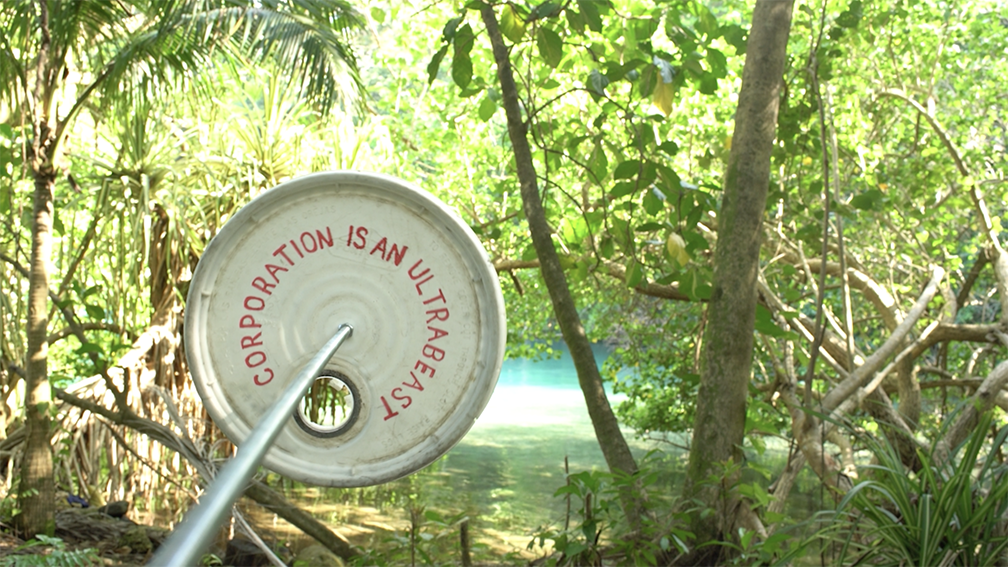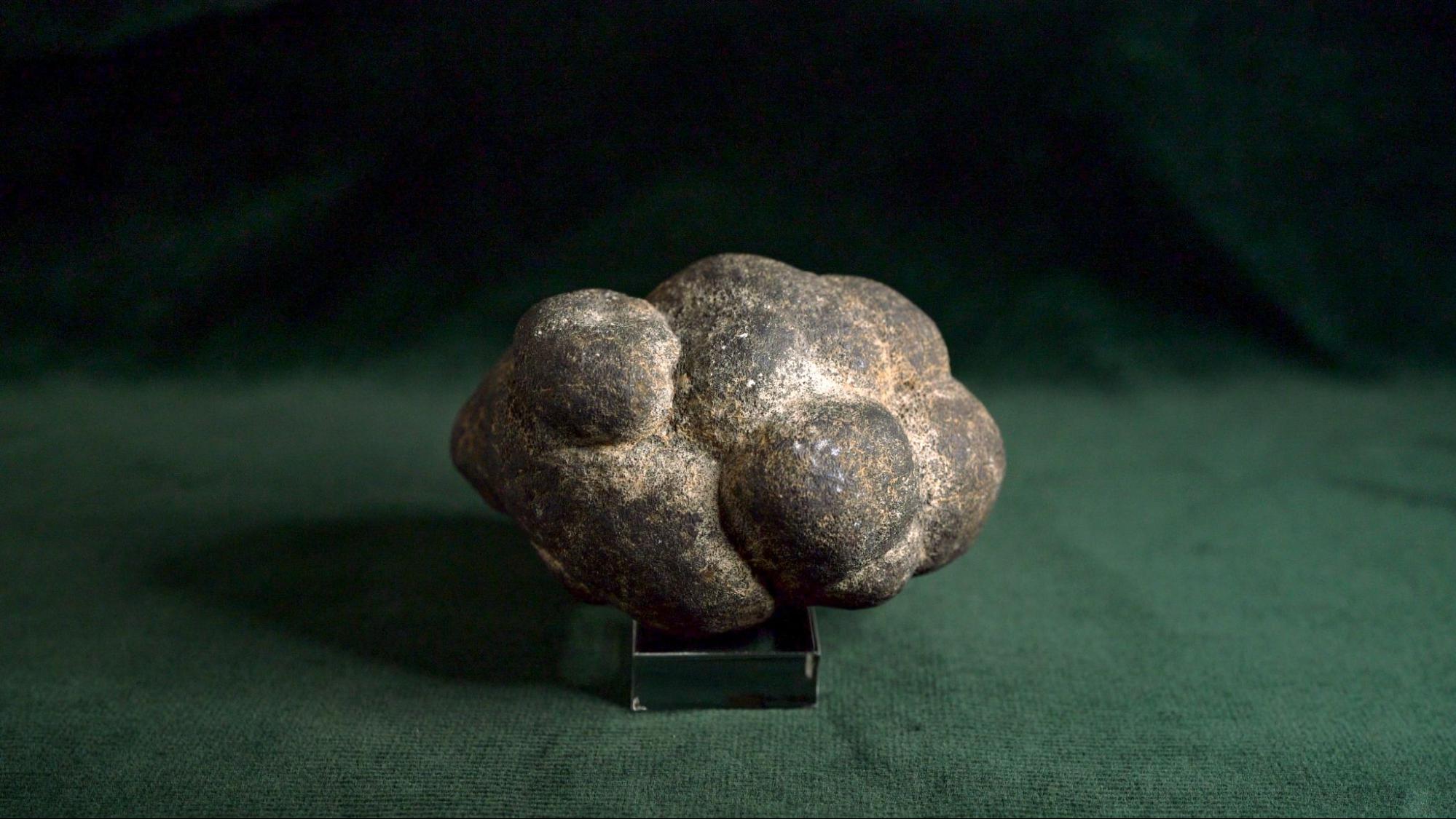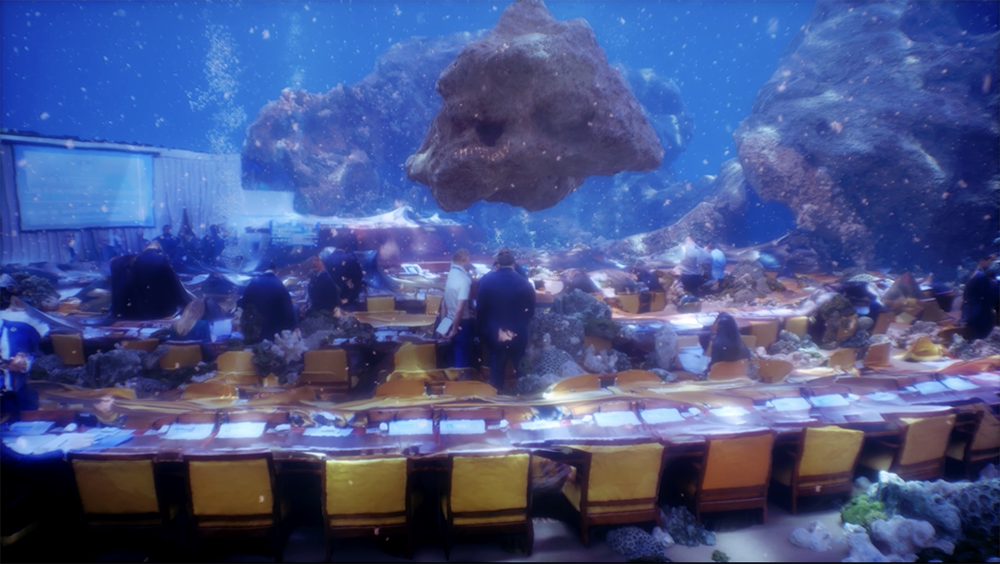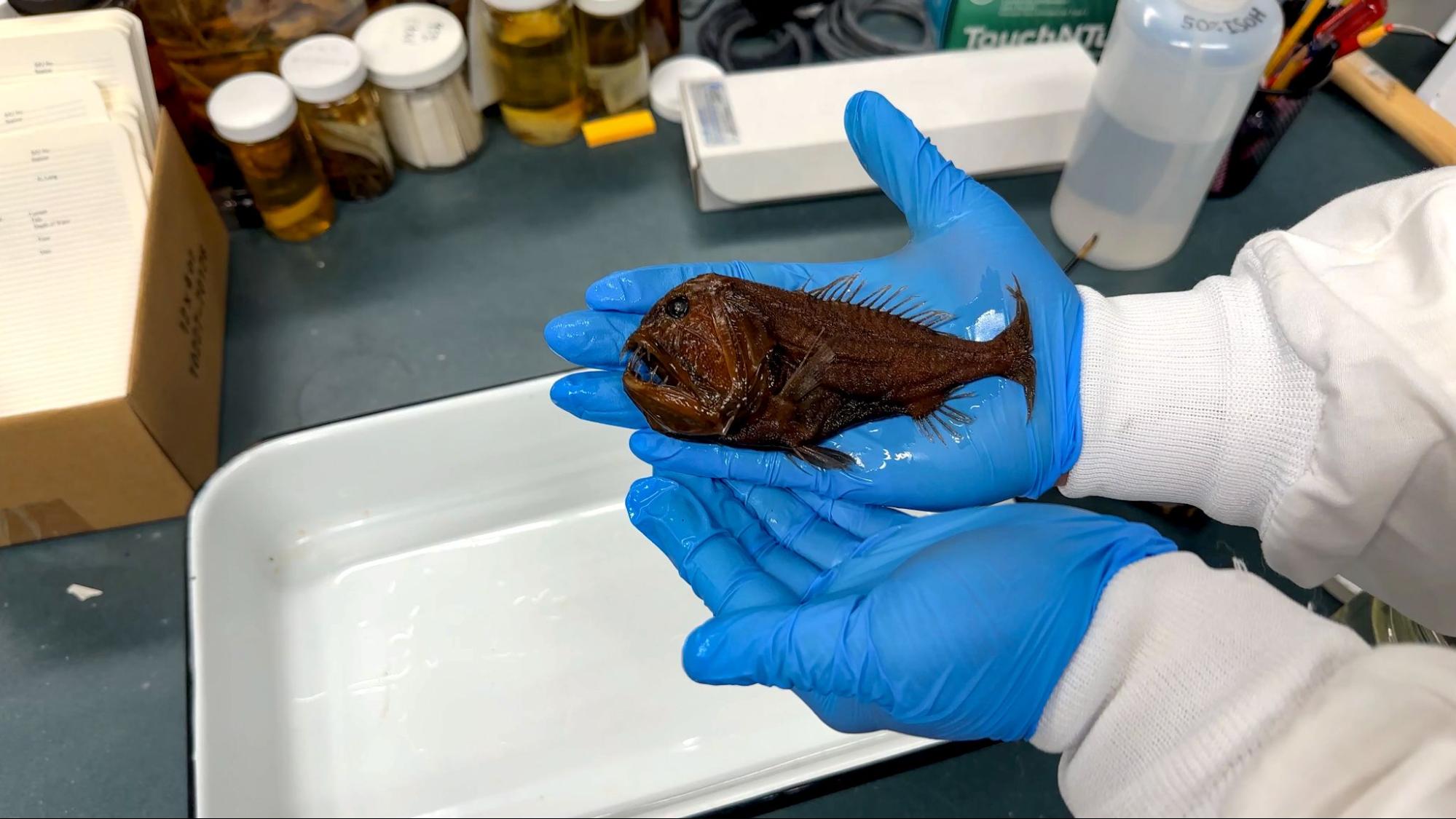On the evening of Thursday, November 6, Art + Technology Lab grant recipients Patty Chang and David Kelley will present a special musical performance and screening of their film Stray Dog Hydrophobia, which situates deep sea mining within the longer histories of colonialism, slavery, extraction, and geoengineering. Surrounded by four projections, a live chorus of vocalists, percussionists, and horn players, as well as the film’s composer Yasna Yamaoka Vismale, will synchronously perform a composition for the film amongst the audience.
The artists were inspired to pursue the project upon learning that the International Seabed Authority was approaching a pivotal decision on whether to allow deep sea mining, after the island nation of Nauru—pressured by a mining company—triggered a two-year deadline for a vote on mining regulations. Susanna Ferrell, Wynn Resorts Associate Curator, Chinese and Korean Art, spoke with the artists to learn more.
Patty Chang and David Kelley, Stray Dog Hydrophobia (still), 2024, courtesy of the artists
Susanna Ferrell: You’ve referred to this project previously as an intervention. It’s quite a complicated topic, something that could fuel dozens or even hundreds of research papers or lectures. How do you distill that information for your audience? What do you want people to retain after viewing the piece?
David Kelley: Our challenge was to make work about a place you can’t physically access—the bottom of the ocean. So we chose to focus on Jamaica, where the International Seabed Authority (ISA) meets biannually to write the regulations for the Law of the Sea. Our intervention extendedbeyond the mechanics of deep-sea mining to the larger histories of colonialism in Jamaica: seventeenth-century trade, piracy, and the Dutch East India Company’s insistence on laws to protect their shipping lanes. These histories tie directly to the violence of colonialism, particularly in Jamaica, through the enslavement of Africans and their forced labor in sugar, coffee, and cocoa production.
Patty Chang: The writer Susan Reid gave us a crucial insight when she saw our film recently in Kingston. She said: “It is a reminder of the ISA’s presence in Jamaica being an ongoing expression of extractive colonial legacies.” For us, that clarified how mineral extraction is in direct lineage with earlier forms of exploitation. The title of our exhibition at ArtCenter, Our Abyssal Kin [on view through January 24, 2026] emerged from this thinking. It references Hawaiian activist Uncle Sol [Solomon Pili Kaho’ohalahala], who explained that his ancestors are coral polyps on the ocean floor—that the ocean itself is his family. If we can extend the perspective that “the ocean is everyone’s family,” we might see the deep sea as more than a resource, instead as a kinship network deserving of care.
Patty Chang and David Kelley, Stray Dog Hydrophobia (still), 2024, courtesy of the artists
SF: The deep sea is something we have to imagine because we don’t get to experience it first hand, but this is also true of places on land—places that are coming up on the news and being imagined by the reader or viewer. I think it can be difficult for people to frame what is happening in those places as a reality, without the lived experience.
DK: Exactly. From a Western perspective, colonialism and extraction are often invisible because citizens don’t travel to those sites. Cobalt mining in Congo, for instance, is rarely encountered except through the news. Our project became a kind of media archaeology—asking where the materials we rely on, especially in the so-called green and blue economies, come from. Electric cars, solar panels, and wind turbines are not simply “clean” technologies; they rely on extractive processes that repeat old colonial patterns.
SF: Can you talk to me a little bit about what your research process has been like? I know that you did the majority of filming in either Jamaica or Great Britain, but we also did some in Los Angeles that was more behind-the-scenes.
Patty Chang and David Kelley, Stray Dog Hydrophobia (still), 2024, courtesy of the artists
PC: We began in Kingston, Jamaica, because it is the nexus where global decisions are made about the ocean by a very small body of delegates. We observed and listened, inserting different kinds of language into that space—like when Hawaiian activist Uncle Sol chanted to the ISA delegates, disrupting legal rhetoric with the voice as sacred practice. We also traveled to the UK, where polymetallic nodules were first discovered during the HMS Challenger expedition in the 1870s. At Oxford and London we filmed the original nodules and historic collections.
DK: Travel and conversations with activists, artists, scientists, and musicians were central to our work, but our process was also about activating research. At the ISA, where cameras are banned, we filmed clandestinely, even scanning the assembly hall with a phone to build a 3D model. Later we submerged that digital hall into an oceanic environment using the Unreal Engine. Traditional documentary methods mixed with experimental tools like animation and photogrammetry allowed us to build speculative spaces connecting disparate worlds.
SF: In this research process, one thing we did together was view objects in LACMA’s collection that were related to the sea, or incorporated some of these deep-sea minerals. But I know that you also worked with the Scripps Oceanographic Institute in San Diego. Can you talk about what that collaboration was like?
Research photo, courtesy of the artists
PC: At Scripps we saw deep sea fish specimens, displaced from their environment and preserved in jars. We wondered how we could recontextualize these specimens, shifting them from scientific storage into the art museum where people could engage them spatially. Working with MFA students at San José State University, we designed glass and ceramic supports to hold the specimens. In science, polymetallic nodules are described as “substrates”— the surfaces that support sessile organisms on the ocean floor. Reid’s writing also emphasizes that nodules, often seen as inert minerals, are in fact ecological hosts. Many sea creatures cannot move independently and rely on nodules as their home. Extending that metaphor of a substrate or home, our artworks became supports for both scientific specimens and metaphorical kinships, suggesting forms of care beyond resource extraction.
DK: By incorporating elements from public commons like the ocean or from university collections—things that are not commodities—we wanted to resist the idea of the ocean as only a site of resources to be bought and sold.
SF: Where does the title Stray Dog Hydrophobia come from?
DK: The title grew stranger the more we worked with it. We are interested in human and non-human relationships. During the COVID-19 pandemic, we thought about zoonotic diseases—how viruses jump between species when ecological systems are destabilized. Stray dogs also became a potent image: in many developing countries they embody both autonomy and threat—free but also feared, potentially carrying rabies. One of the dictionary definitions of rabies is “hydrophobia,” the fear of water, as it makes swallowing painful. The title combines these ideas: independence, danger, ecological disruption, and the fear of water. Ultimately, it points to how human and non-human lives are entangled, sometimes symbiotically, sometimes violently.
The Art + Technology Lab is presented by
![]()
The Art + Technology Lab is made possible by Snap Inc.
The Lab is part of The Hyundai Project: Art + Technology at LACMA, a joint initiative between Hyundai Motor Company and LACMA exploring the convergence of art and technology since 2015.





